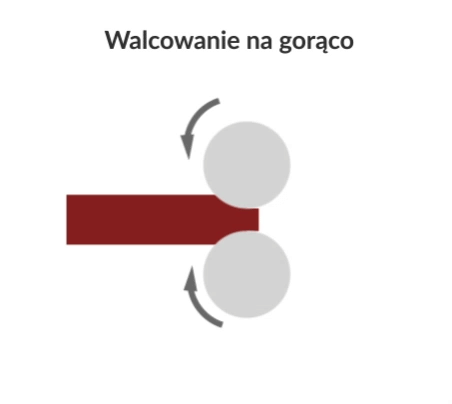Hot rolling is a metal machining process in which the metal is heated above its recrystallisation temperature in order to plastically deform it during the rolling process. This process is used to create shapes with the desired geometric dimensions and material properties while maintaining the same volume of metal.
The hot metal is passed between two rotating rolls to flatten and lengthen it, reduce its cross-sectional area and achieve a uniform thickness. Hot-rolled steel is the most common product of the hot rolling process and is widely used in the metal industry as a finished product or as a raw material for subsequent operations.

